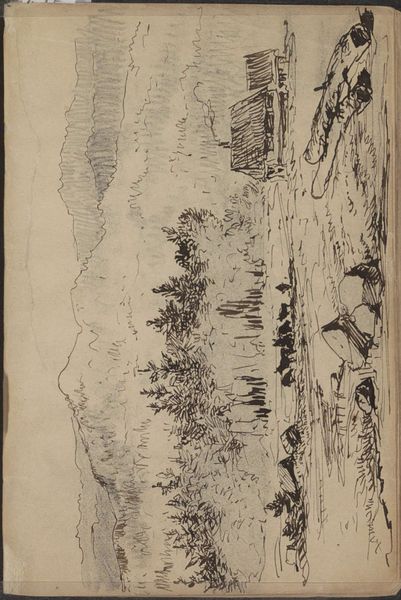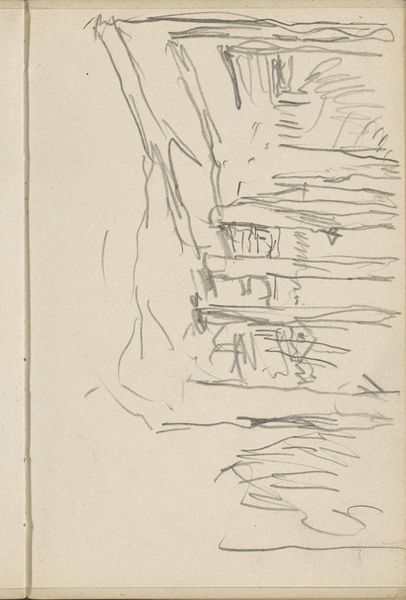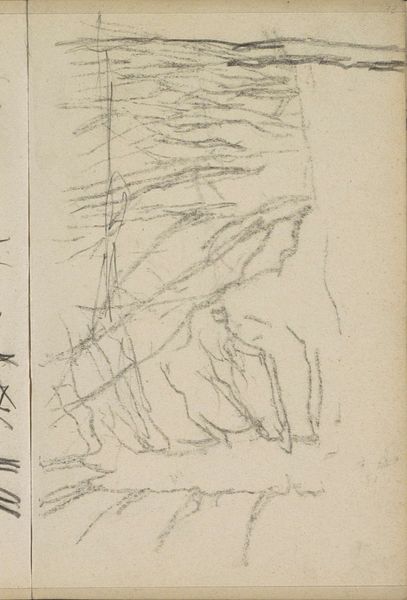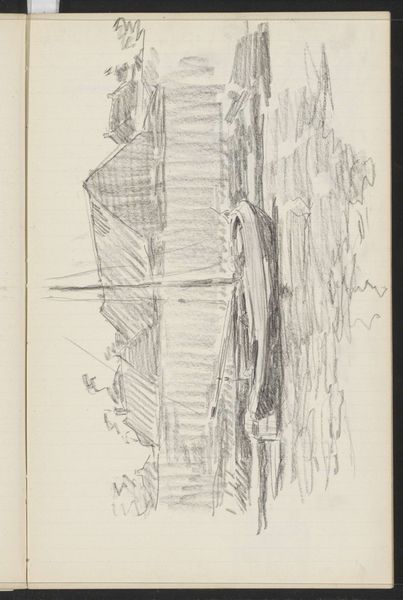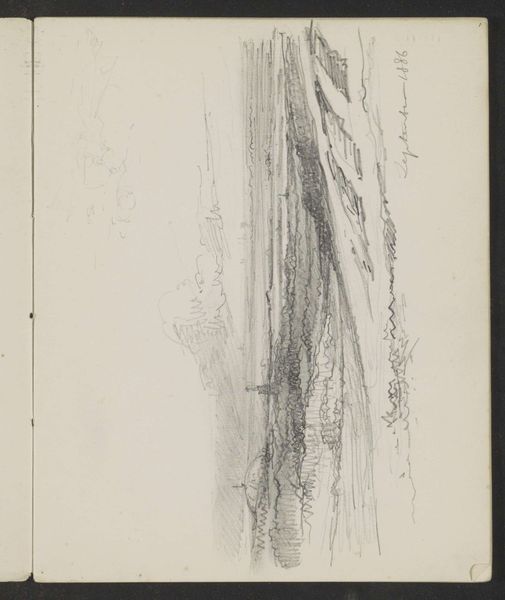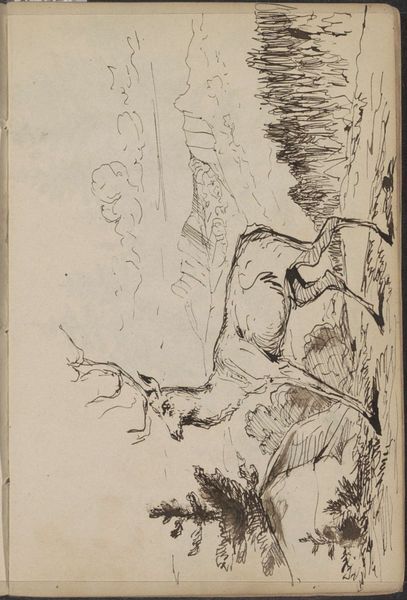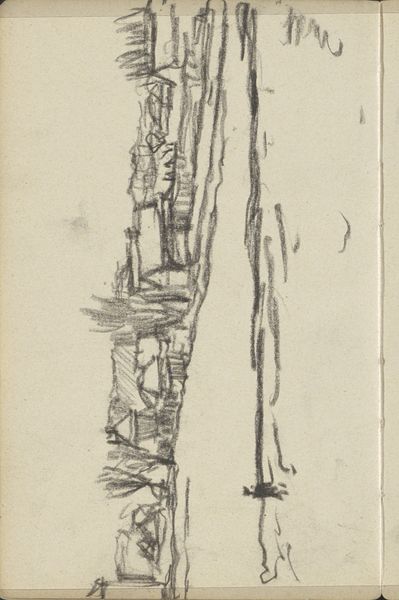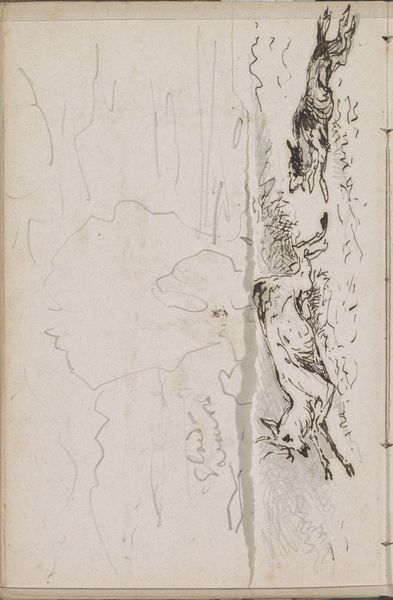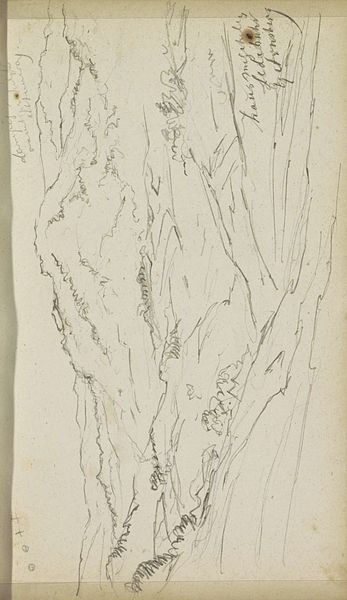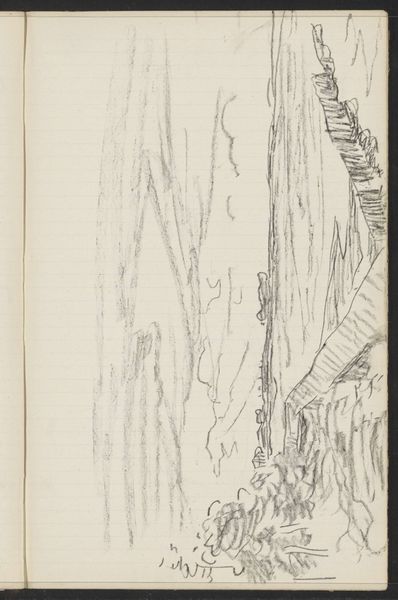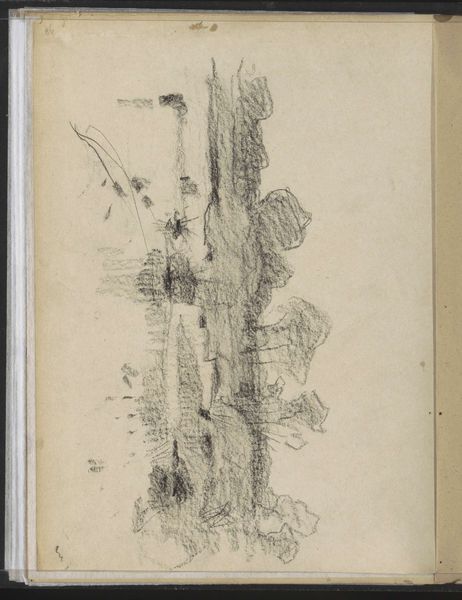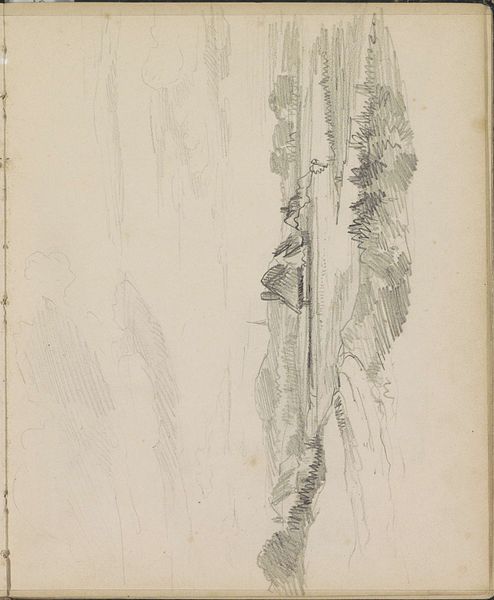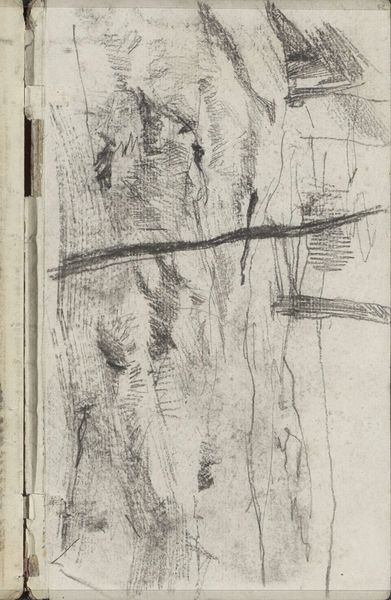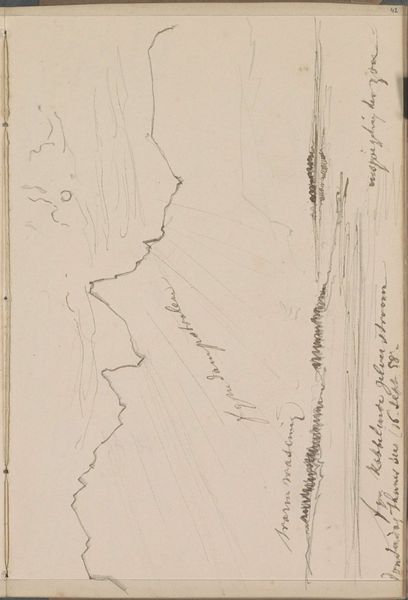
Copyright: Rijks Museum: Open Domain
Editor: So, this is Johannes Tavenraat's "Berglandschap met een rivier en dennenbomen" from 1858, made with ink. It’s a really delicate, almost ephemeral sketch. What do you see in it? Curator: It immediately strikes me as a Romantic era response to the burgeoning industrial revolution. Landscape art, at this time, often served as a reminder of the sublime power of nature in contrast to increasingly industrialized urban spaces. Note how the scale is diminished and seemingly lacks much detail on closer examination; what impression does that choice make on you? Editor: It does feel a bit…unpopulated, almost lonely. Like nature existing apart from humanity. I hadn't really thought about the industrial revolution context, though. Curator: Precisely. And consider the choice of ink, a relatively accessible and portable medium. Artists like Tavenraat were increasingly taking their art directly to nature, democratizing both the subject matter and the production of art. Does this immediacy suggest something about the piece’s role within artistic circles? Editor: Possibly as a study for a larger painting? Or even as a kind of visual diary? It feels more personal, somehow, than a grand oil painting destined for a museum. Curator: Exactly! These landscape drawings also allowed art to move out of studios and palaces and appeal to a burgeoning middle class through print reproductions and sketching clubs, both changing access and the very definition of what constitutes art and its public purpose. Editor: That’s fascinating; I never thought about landscape art being so closely tied to social changes like that. Thanks, I’ll definitely remember that. Curator: And I find your interpretation about the loneliness of the depiction thought provoking in considering an emotional response to cultural change. Food for further thought.
Comments
No comments
Be the first to comment and join the conversation on the ultimate creative platform.
